Key takeaways:
- Community gardens foster relationships, promote sustainability, and enhance food security in urban environments.
- They provide mental well-being benefits and contribute to local biodiversity, creating habitats for wildlife.
- Design and accessibility of gardens play a crucial role in community engagement and social interaction.
- Challenges include maintaining consistent participation, managing resources effectively, and navigating community dynamics.
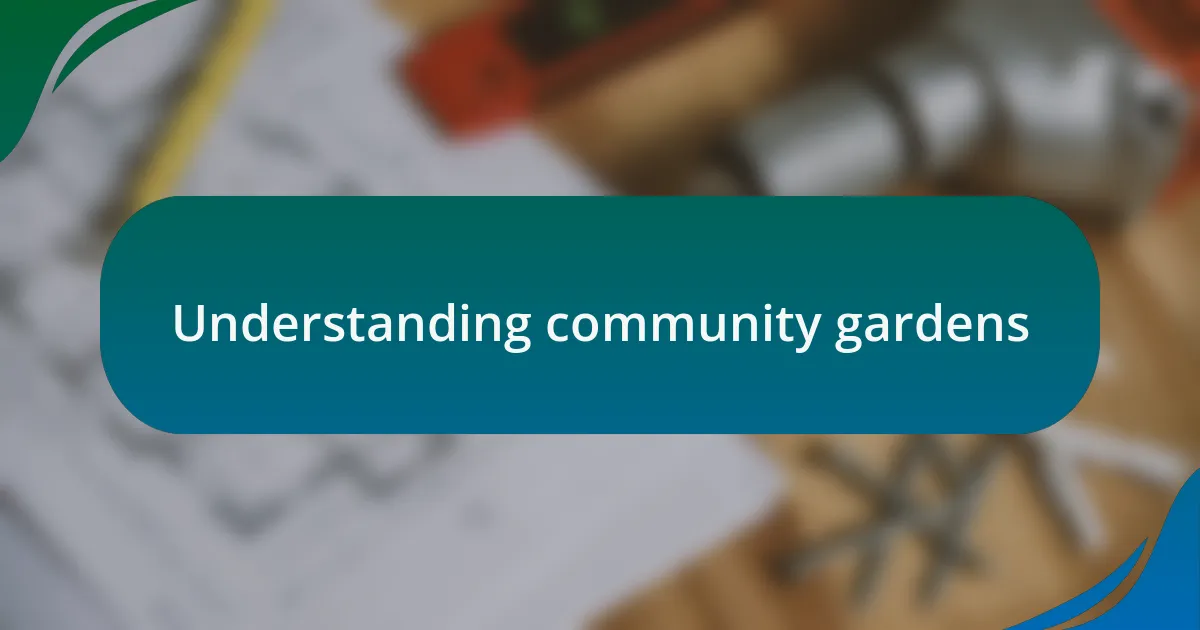
Understanding community gardens
Community gardens serve as a unique intersection of urban life, nature, and social collaboration. I remember my first experience stepping into one; the vibrant colors of the flowers and the rich soil aroma enveloped me, sparking a sense of connection to a community I hadn’t experienced before. It’s amazing how a simple patch of land can generate such enthusiasm and belonging among diverse groups of people.
What often strikes me is the underlying purpose of these gardens—they are more than just places to grow food. They foster relationships and create spaces for sharing knowledge and resources. Have you ever thought about how planting a seed can symbolize planting hope? I witnessed neighbors sharing their gardening tips and recipes, all while nurturing friendships that extended far beyond the garden’s borders.
Moreover, community gardens play a critical role in promoting sustainability within cities. They contribute to food security and allow urban dwellers to reconnect with the source of their food. I often find myself pondering how much fresher and tastier a tomato is when I’ve picked it myself versus what I might find at a supermarket. This often overlooked aspect of gardening not only cultivates healthier eating habits but also deepens our appreciation for the environment.
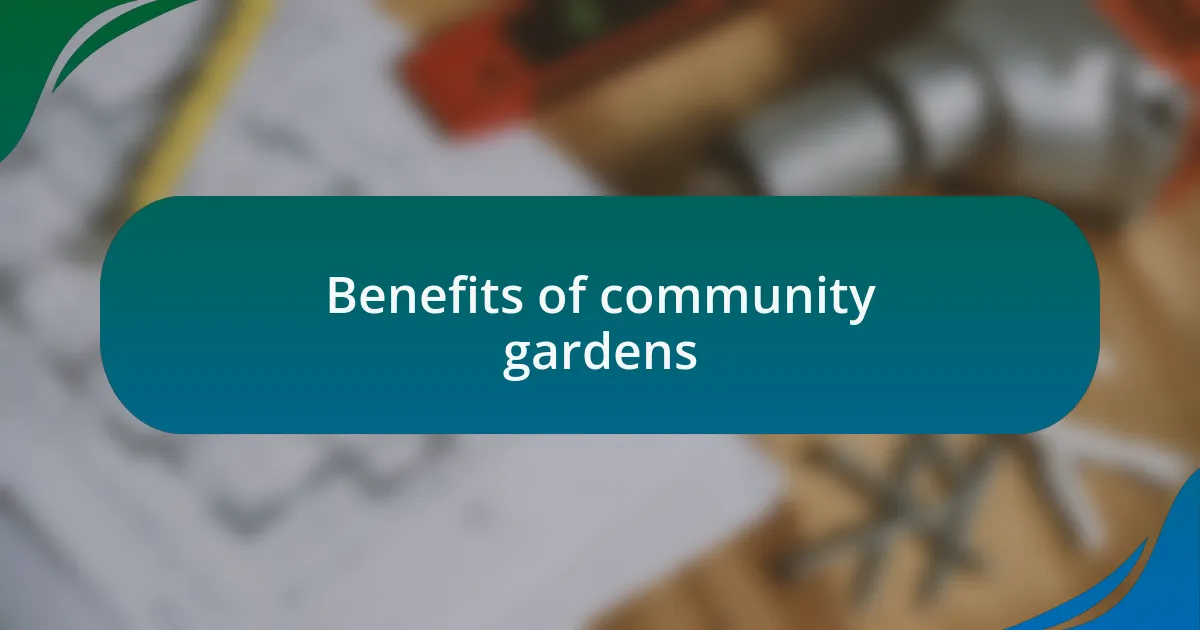
Benefits of community gardens
Community gardens offer a plethora of benefits, both personal and communal. One striking advantage I’ve noticed is how they can foster mental well-being. After long, stressful days, I’ve often found solace in tending to the plants, feeling those worries melt away with each shovel of dirt. Have you ever felt the calming effect of nature? For me, it’s a reset button, creating a peaceful retreat in the midst of a bustling city.
Another remarkable benefit is the boost to local biodiversity. Each garden I’ve visited has its own ecosystem, filled with diverse flora and fauna. I vividly recall witnessing bees buzzing happily from flower to flower, playing their vital role in pollination. Isn’t it incredible how community gardens transform barren urban spaces into habitats for wildlife? This not only makes our neighborhoods more beautiful but also supports the crucial connections in our local ecosystems.
Furthermore, these gardens can serve as powerful educational tools. I’ve participated in workshops where children learned to plant seeds while adults exchanged eco-friendly gardening practices. It’s inspiring to see knowledge being shared, sparking curiosity about sustainable living. Wouldn’t you agree that passing down these skills creates a stronger, more informed community? It’s this sharing of wisdom that truly nourishes both the soil and the soul.
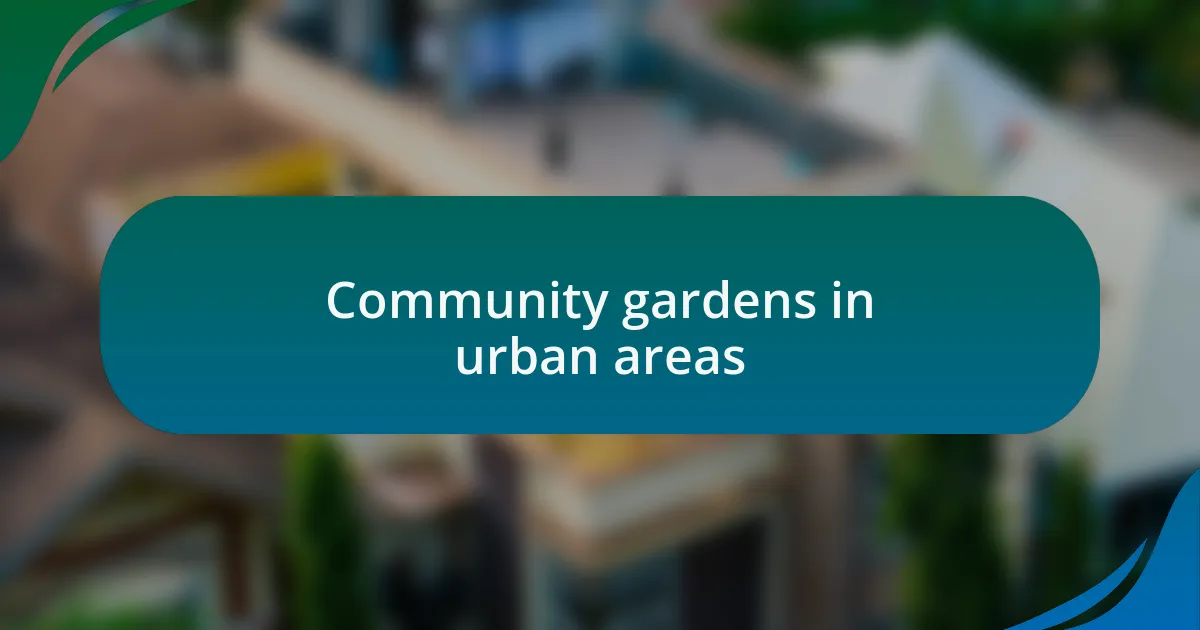
Community gardens in urban areas
Community gardens in urban areas serve as vital green spaces that cultivate not only plants but also relationships among neighbors. I remember the first time I joined a local community garden; it felt like stepping into a vibrant tapestry of cultures, each plot reflecting the unique stories and traditions of its gardener. Have you ever realized how such spaces can break barriers and foster connections? It’s heartwarming to see people come together over a shared love for the earth.
In my experience, these gardens play a crucial role in enhancing food security. One summer, I participated in a harvest festival where we celebrated the fruits of our labor. The joy of picking fresh vegetables and sharing them with those in need was truly fulfilling. It made me ponder: how can we ensure that everyone has access to healthy food in urban settings? Community gardens are a step toward that goal, offering fresh produce right at our doorstep.
Not to mention the impact on urban aesthetics. Each garden I’ve encountered has brought a splash of color to the concrete jungle, creating pockets of beauty amid the hustle and bustle of city life. I still recall the surprise I felt when I stumbled upon a garden bursting with tomatoes, peppers, and sunflowers nestled between two high-rises. How uplifting is it to know that a small area can be transformed into a thriving sanctuary, enriching the community’s spirit? It’s a testament to what can flourish when we cultivate both our land and our friendships.
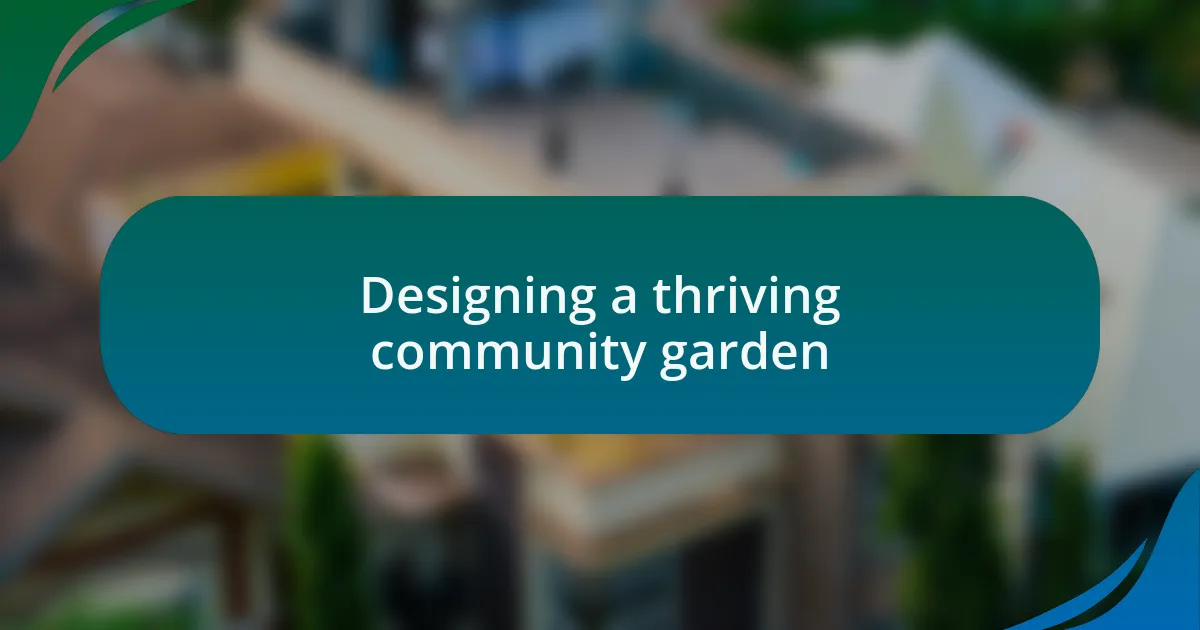
Designing a thriving community garden
Designing a thriving community garden involves thoughtful planning that harmonizes aesthetics with functionality. I vividly recall the moment when we decided to position our garden near a sun-drenched wall, which soon became a favorite spot for people to gather and share gardening tips. Isn’t it amazing how such a simple design choice can transform a space into a social hub?
Choosing the right plants is equally important. I remember when a few of us debated over what vegetables to grow. We opted for a mix of familiar staples and some unique varieties to cater to the diverse tastes of our community. This decision not only thrilled seasoned gardeners but also excited individuals who were new to gardening. How often do we underestimate the impact of inclusive choices in fostering a sense of belonging?
Furthermore, incorporating pathways and seating can enhance the garden’s accessibility and encourage interaction. I still fondly recall those evenings spent on the rustic benches with neighbors, discussing everything from gardening strategies to life stories under the setting sun. It made me wonder: how often do we allow our environments to dictate our social interactions? A well-designed garden, after all, is about nurturing both plants and relationships.
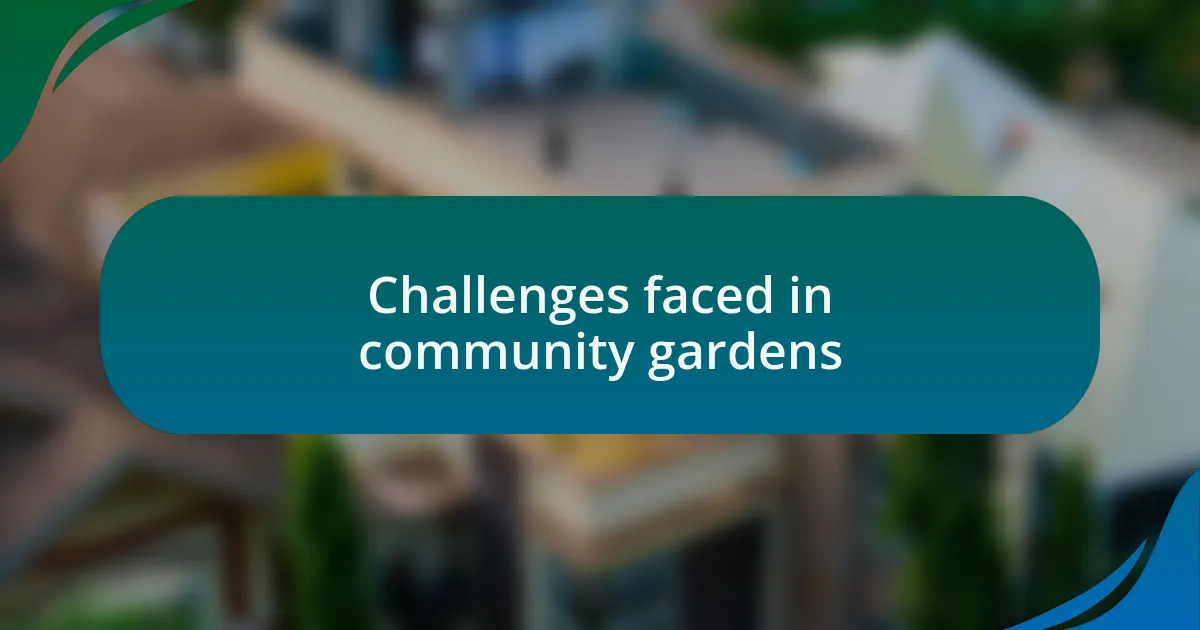
Challenges faced in community gardens
One major challenge faced in community gardens is the struggle for consistent participation. I’ve seen this firsthand when volunteers who once eagerly tended to the plants slowly faded away. It made me wonder: what keeps people engaged in a shared endeavor? It often boils down to making everyone feel valued and ensuring they have the support they need to contribute meaningfully.
Resource management also presents hurdles. I recall a summer when we had an unexpected lack of water due to a broken irrigation system. During that time, the garden’s beautiful blooms started to wither, reflecting our collective anxiety. I realized then that without proper planning and resources, even the most vibrant gardens can quickly become a source of stress rather than joy.
Lastly, the dynamics of community relationships can complicate things. I remember a disagreement over garden space allocation that almost tore us apart. Navigating differing opinions can be challenging, but it also made me appreciate the importance of open communication and compromise. Have you ever faced a similar situation? It’s a reminder that while gardening is about cultivating plants, it’s often the relationships we nurture that truly define our community gardens.